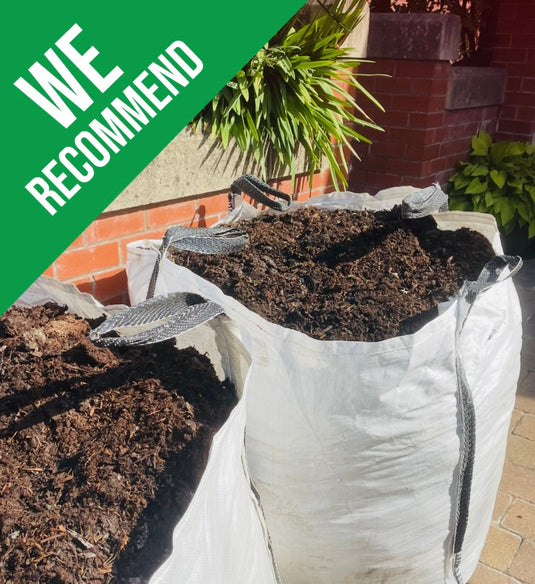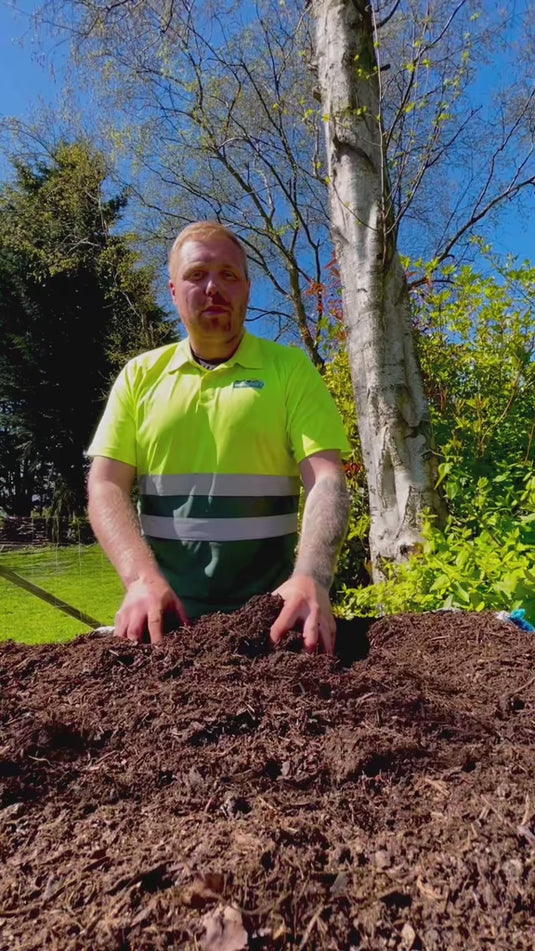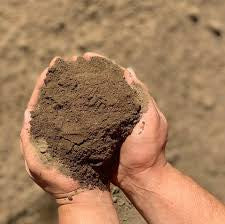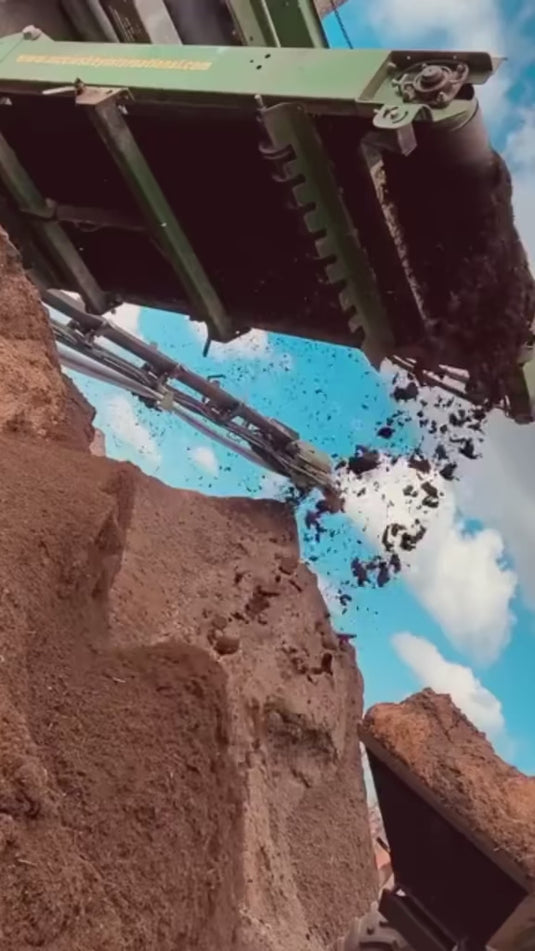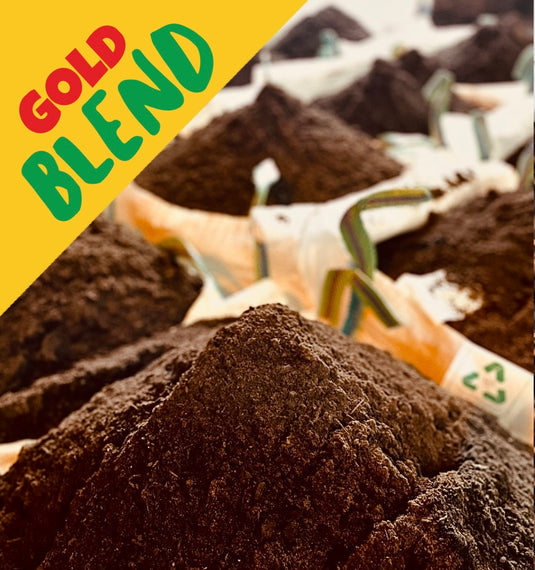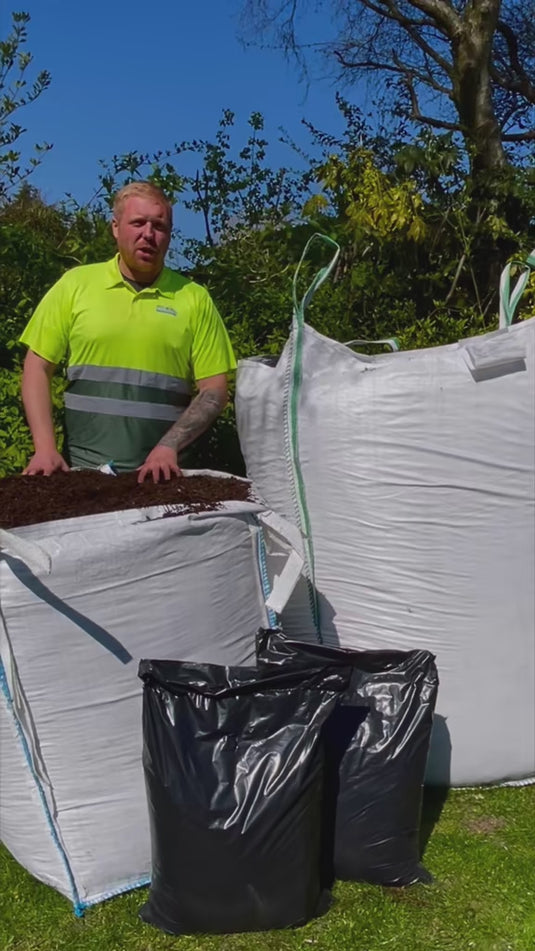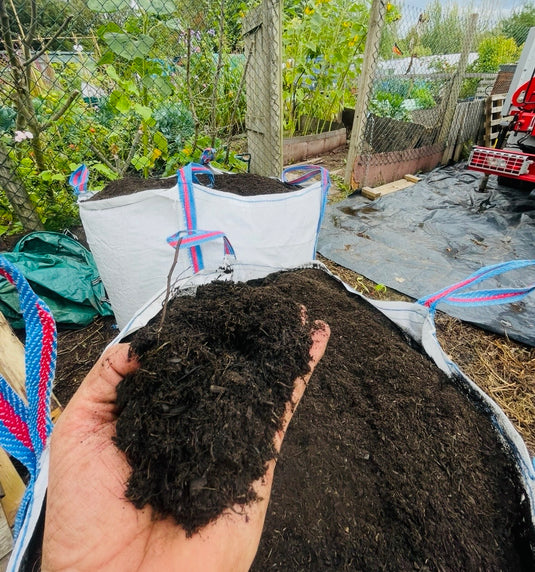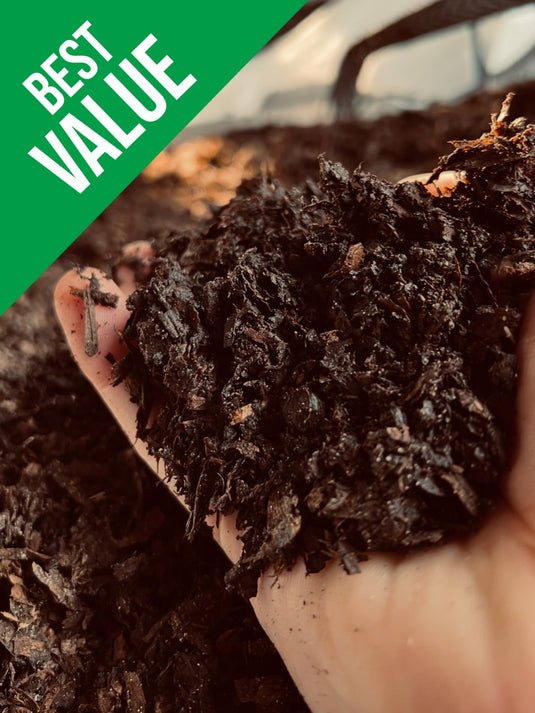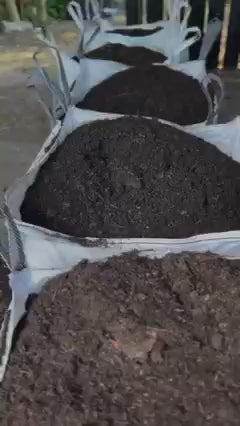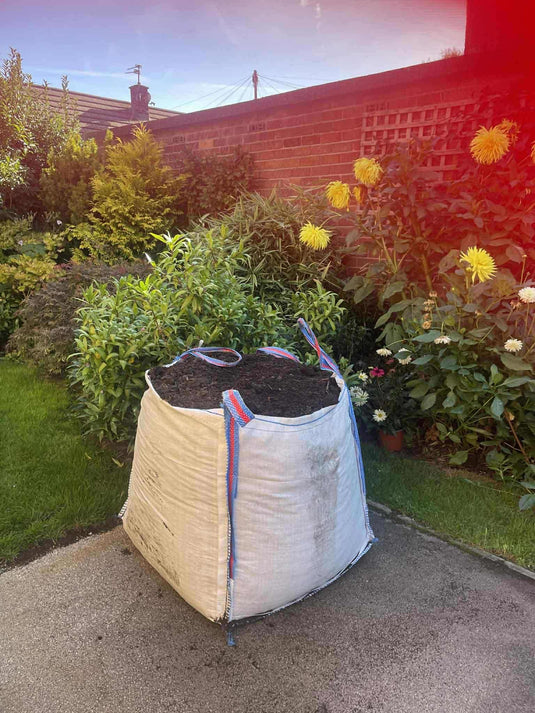Read time: 5 minutes
There’s an increasing number of signs that spring is on its way. We have snowdrops, primroses and crocuses in flower and the daffodil greens are shooting up. On a mild, sunny day it’s tempting to get ahead with the growing season and start sowing seeds, especially down here in the South. But February is an uncertain month and with more cold weather possible, it’s a good idea to go slowly and focus instead on getting everything in order before spring really gets underway.
February Overview
Spring might be in the air but there’s often still plenty of cold weather to be had in February. Whatever the weather is doing in your part of the UK, there are some key tasks to focus on this month to get your garden ready for spring.
Pruning, feeding and mulching are the order of the day. February is the last month to complete any pruning of trees, shrubs and climbers that still needs to be done as well as finish the planting of bare-rooted trees and shrubs. It’s also the perfect time of year to apply organic fertilisers (which release slowly over time) so that they’ll be available to plants, just as they are coming into growth during the spring. Think of it as a spring spruce-up for your plants. A haircut and some extra nutrition in the form of organic fertilisers, compost and manure.
You can also prepare for the busy months ahead by making sure that all of your tools and equipment are in good condition and that you have everything you need. Check that you have plenty of clean pots, compost and labels. You can give your tools some TLC by sanding down the wooden parts and then oiling with some linseed oil to help preserve them. Give your greenhouse and cloches a good clean with hot, soapy water and scrub down patios and paths to get rid of any slippery mud or moss.
What to Do in the Kitchen Garden
On milder days, when the sun feels warm, it can be tempting to crack on and begin some outdoor seed sowing. However, the soil is often still too cold and wet in February and with plenty of cold weather still to come it may be best to wait a while. If you use cloches to warm the ground first then you can definitely experiment with some early varieties of peas and broad beans. Otherwise, it might be best to stick to indoor seed sowing for now. If the weather allows, you can prepare your outdoor seed beds by weeding them and dressing them with compost. If it’s cold and wet, spend some time indoors with a cup of tea, organising seeds and planning what to grow where.
Vegetables
Order vegetable seeds. If you haven’t already, order your vegetable seeds now. Many of the smaller companies are overwhelmed with demand and are only able to accept orders during certain time slots.
Order seed potatoes. Once your potatoes arrive, ‘chit’ them by laying the tubers in trays with the “rose” end (the end with the most buds on it) pointing upwards. Put them in a cool, light, frost-free place and after two or three weeks they will begin to sprout.
Sow early pea varieties. An ideal way to sow peas is in an old piece of plastic guttering with drainage holes drilled in the bottom. The plants can then be slid out of the guttering and into their final growing position without disturbing their roots. Use a peat-free seed compost and sow the seeds in two rows, 2.5-5cm apart and about 2.5cm deep. In mild areas, you can sow a few peas outside under cloches.
Sow leeks, onion seeds, broad beans, spinach and chard undercover. You can also sow some broad beans outside if the soil isn’t too cold.
Sow early varieties of Brussels sprouts, kohlrabi, and sprouting broccoli indoors.
Sow tomatoes. If you're raising plants to grow in a greenhouse or polytunnel, you can sow some seeds now either in a heated propagator or on a warm sunny windowsill.
Plant shallots. Sow the sets about 18cm apart in a shallow drill so that just the tips are showing.
Plant garlic. If the ground isn’t frozen or waterlogged, plant garlic in February, otherwise wait until next month.
Force rhubarb for an early crop.
Make a runner bean trench. Runner beans are very hungry plants. Traditionally, a specially dug bean trench filled with compost or manure has been the way to create a super-rich bed that supplies them with all the nutrients they need.
Salads and Herbs
Pot up mint. Mint is one of my favourite herbs and delicious to use along with the first early potatoes. Unless you’re happy for it to take over your garden, it’s generally best to confine it to pots. To pot up mint, dig up a section and separate out the healthiest looking parts. Give them a rinse to remove the soil and then cut a few small sections of thick fleshy root (about 2.5-5cm long). Pot these up in a multipurpose compost, keep them in the greenhouse or on a windowsill and water regularly. (The other sections can be replanted back in the garden if needed).
Sow winter salads undercover. Claytonia (winter purslane), mizuna, mustard, rocket and winter cress can all be sown undercover. Sow some radish seeds too and you’ll have a salad feast in a few weeks time.
Sow hardy annual and biennial herbs undercover.You can start sowing chervil, coriander and parsley now.
Start sowing perennial herbs. Chives, french sorrel, leaf fennel and lovage can be started off now.
Feed container-grown herbs. As weather conditions warm up, top-dress herbs in containers by removing the top 5-10cm of compost and replacing it with a 50/50 mixture of well-rotted garden compost and either leafmould or green waste compost. Alternatively use a commercial soil conditioner mixed 50/50 with fresh potting compost.
Mulch perennial herbs. Improve fertility round leafy herbaceous herbs, such as chives, with a top dressing of garden compost.
Fruit
Prune autumn-fruiting raspberries. If you haven’t already, cut down the canes of autumn fruiting raspberries to ground level. They will produce their fruit from August or September on long stems that are grown this year. By contrast, summer-fruiting raspberries fruit on the previous year’s growth and are pruned in a different way, at the end of the summer.
Finish pruning fruit trees and bushes. This is really the last month for pruning fruit trees that will be coming into growth soon. After pruning, feed with an organic fertiliser and then mulch with some well-rotted manure or garden compost.
Finish planting bare-rooted fruit trees and bushes.Whilst bare-rooted trees and shrubs can be planted anytime during the dormant season from November-March, February is a good month as it’s not long before the soil begins to warm up and new roots will soon begin to grow. Check on newly planted trees and re-firm them into the ground if they have been lifted by the frost.
Finish planting raspberry and blackberry canes.
Ornamental Trees, Shrubs and Climbers
Prune hardy evergreen trees and shrubs. Feed with an organic fertiliser after pruning and then mulch with organic matter. More tender shrubs such as Choisya ternata (Mexican orange blossom) should be left until later in the year when the weather is a bit warmer.
Pune overgrown hedges before nesting season begins. The majority of deciduous hedges can be pruned back hard as can broadleaved evergreens such as Prunus laurocerasus and laurel. It’s important to remember that most conifers, however, will not grow back from old wood so you should never cut into this.
Prune late-flowering shrubs. Late-flowering shrubs such as Buddleja davidii, Ceanothus, hardy fuchsias, lavatera, leycesteria and santolina all flower best on this year’s new wood so pruning now gives them the most time to put on new growth. They can all be cut back almost to ground level, leaving one or two buds or shoots on each stem. It can feel a bit drastic but will give the best display of flowers. If you want to increase the size of the shrub, then leave a few stems on and prune these lightly.
Repot or top-dress shrubs in containers. To top-dress, scrape off about 5cm or so of the old compost from the surface and replace with some fresh multi-purpose compost.
Flowering Plants
Sow hardy annuals indoors. If you're desperate to get some annuals going, you can start sowing the seeds of hardy annuals such as calendula, cerinthe, cornflowers, nigella and scabious indoors now.
Start dahlia tubers. Pot up tubers either singly or by placing several together in large trays. Place them in good light and spray with water every now and again to encourage buds to grow.
Order your summer-flowering bulbs.
Feed herbaceous perennials. Plants will be coming into growth this month and will benefit from being fed with an organic-based fertiliser to get them off to a good start.
Divide and plant snowdrops after flowering.Snowdrops soon multiply and spread into drifts. Overcrowded clumps can be lifted with a fork after flowering and separated out before being replanted singly in informal drifts at the same depth as before. If you’re planting snowdrops for the first time, they can be brought “in the green” now.
Prune wintering-flowering jasmine after flowering.Cut out any dead or damaged wood before tying in any stems that you need to extend the framework. Then, shorten all the side growths from this main framework to about 5cm from the main stems. This will encourage plenty of new shoots for flowering next winter. Feed and mulch after pruning.
Prune late-flowering clematis. Established clematis fit into three main pruning groups consistent with flowering times. ‘Pruning Group 3’ comprises clematis that flower from mid to late summer. These include Clematis orientalia, C. texenis and C. viticella which if left unpruned, will grow into a tangled mass of growth with bare lower stems. Prune them back hard in February each year to the lowest pair of buds. Feed and mulch after pruning.
Trim winter-flowering heathers. To keep plants bushy and compact, trim back to the base of the flower stalks once they have finished flowering. This will encourage side-shoots to grow and prevent the heather from becoming straggly with a bare centre.
Lawn Care
Keep off the grass in snowy or frosty weather to prevent damage.
Aerate to improve drainage. Spike any areas of the lawn that hold water using a garden fork pushed into the ground.
Feed lawns with an organic fertiliser. This will help to get the grass off to a good start in the spring.
The Wildlife Garden
Finish cutting back overgrown shrubs and hedges before the nesting season starts.
Put up nest boxes. If you have any nest boxes still to put up, do so as soon as possible. Garden birds including blue-tits and great-tits start scoping out nesting sites this month. Don’t worry if they don’t start using them straight away as they need a bit of time to get used to them.







